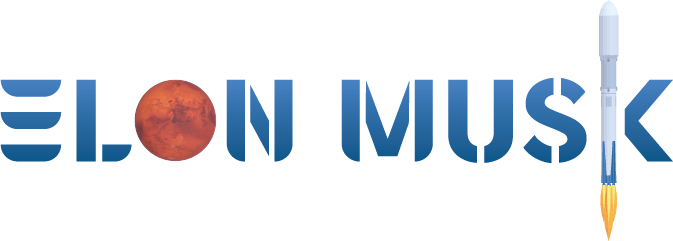
SpaceX’s first-ever human flight is Elon Musk’s biggest moment yet
- by Wired
- May 29, 2020
- 0 Comments
- 0 Likes Flag 0 Of 5

A SpaceX Falcon 9 rocket launching supplies to the ISS in June 2017
Bill Ingalls/NASA via Getty Images
SpaceXâs race to
launch humans into space started with a wheel of cheese. In December 2010, the then eight-year-old firm became the first company to launch a commercial space capsule â the Dragon spacecraft. Its precious cargo? A wheel of Le Brouère cheese in homage to a Monty Python sketch.
SpaceX is known for its oddities and innovations, from Elon Musk founding the company in 2002 while shaking a pair of maracas to quite literally launching a car into space on a giant reusable rocket. But if all goes well on Saturday, May 30, the company will take the next major step in its relatively young history, oddities and all.
Having been founded with the goal of one day launching humans to space, SpaceX is about to launch two astronauts for Nasa â Bob Behnken and Doug Hurley â on its Crew Dragon spacecraft from Cape Canaveral in Florida. The launch was originally scheduled for Wednesday May 27, but was scrubbed while the astronauts were on the launchpad because of bad whether. The new launch time is 20:22 BST on Saturday, May 30 with a backup slot a day later if the weather thwarts this other attempt.
âThis is a chance for SpaceX to really prove itself,â says space policy analyst Laura Forczyk, founder of the consulting firm Astralytical. âSpaceX was founded on this idea of sending humans to Mars. And 18 years [later], this is really the proof that SpaceX can do what it says it wants to do.â
To get to this moment has been a long and sometimes tumultuous journey. SpaceX is arguably the worldâs most successful private space company, with nearly 100 launches under its belt, and is almost single-handedly leading the charge to land humans on Mars. But it was not always so.
Way back in the early 2000s under president George Bush, Nasa was at a crossroads. The Space Shuttle programme, after two fatal accidents, was seen as ageing, costly and dangerous. With the programme facing retirement, the space agency had a choice to make. Did it want to go down the route of developing its own replacement rockets and spacecraft, or did it want to try something new?
Rumblings towards the latter were set in motion in 2006 when then-Nasa administrator Mike Griffin initiated the Commercial Orbital Transportation Services (COTS) programme. The idea was that rather than hiring companies to build spacecraft and rockets for them, Nasa could instead pay companies for a service, in this case transporting cargo to space.
âIf you looked at something like 2001: A Space Odyssey, they had Hilton hotels and Pan Am space shuttles,â says Lori Garver, former deputy administrator of Nasa from 2009 to 2013. âHaving the government design, build, and operate spacecraft wasnât long-term going to be the way a capitalist society does things.â
After seeking proposals from companies, Nasa paid $500 million (£260 million) to two â SpaceX and Orbital Sciences â to develop spacecraft and rockets to launch cargo to the International Space Station (ISS). The funding was a lifeline to SpaceX, which had tried and failed to launch its first rocket, the Falcon 1, three times before a successful flight in September 2008.
By 2010 SpaceXâs new rocket, the Falcon 9, was ready thanks to Nasa's funding. In December 2010 it launched the Cargo Dragon spacecraft on a test flight into orbit (followed in 2013 by Orbital Sciencesâ Cygnus spacecraft), carrying that wheel of cheese as a test payload. In 2012, SpaceX would become the first commercial company to reach the ISS with Dragon. But there was always a grander ambition in mind. âFalcon 9 was designed to be human-rated from the very beginning,â says space consultant Charlie Garcia from the Massachusetts Institute of Technology (MIT).
Under president Barack Obama, Nasa began to look at whether it could outsource not just cargo launches to private companies, but humans too. In 2010, this resulted in the Commercial Crew Development (CCDev) programme, with the goal of flying humans by 2017 following the retirement of the Space Shuttle in 2011. Until then, Nasa would pay Russia for flights on its Soyuz capsule, most recently at more than $90m for a seat.
The idea was that Nasa could hand over the ferrying of astronauts to and from the ISS in low Earth orbit to commercial companies. In doing so, it would enable the agency to focus on grander missions into deep space, such as taking humans to the Moon and Mars, and save a considerable amount of money in the process. âWeâve estimated the cost-savings are between 20 and 30 billion dollars (£16 to £24 billion),â says Phil McAlister, Nasa's commercial spaceflight director.
SpaceX was not one of the first companies selected in the CCDev program. âA lot of people donât remember that,â says Garver. It was picked in a second round of funding in 2011, initially awarded $75m to look into developing a crewed version of its Cargo Dragon spacecraft, known as Dragon 2 at the time.
It was eventually whittled down to a two-horse race â the new kid on the block in SpaceX, and industry stalwart Boeing and its Starliner spacecraft, receiving $2.6bn and $4.2bn in funding respectively. Could Muskâs company upend the cosmic apple cart and launch humans before its accomplished rival?
Over the years SpaceX continued to gain experience as it flew its Falcon 9 rocket for public and private customers, with just a couple of failures among widespread success. Always, however, launching humans was on the horizon, with SpaceX and Boeing continuously trading blows. In one spat in 2018, Boeing CEO Dennis Muilenburg claimed his company would send humans to Mars before SpaceX. âDo it,â Musk responded in typical Musk fashion.
There were many doubts as to whether SpaceX could beat Boeing to launching humans to orbit, and there have been setbacks. Last year, for example, a previous version of Crew Dragon exploded during a routine test, after a faulty valve caused the spacecraftâs fuel to ignite.
But now with Crew Dragon, SpaceX is on the cusp of reaching the finish line first. Boeing for its part has stumbled considerably, most recently with a botched test flight to the ISS in December 2019 that will need to be rerun later this year â a test that SpaceX accomplished months earlier â and likely wonât launch humans until spring 2021 at the earliest.
âThere were a lot of skeptics along the way,â says Caleb Williams from the US-based consulting firm SpaceWorks. âI imagine that itâs quite sweet for SpaceX to be the first to get to the finish line.â
SpaceXâs rise has been meteoric, but it would not have been anywhere near as quick had it not been for Nasaâs support. In funding companies such as SpaceX, Nasa also wanted to foster a new era of commercial space, and likely had no idea just how successful that would be. âIn 2010, the United States had zero commercial launches,â says McAlister. âIn 2019, the Falcon 9 had captured 65 percent of commercial launches worldwide.â
Saturday's Crew Dragon launch to the ISS is, albeit somewhat later than planned, the culmination of that seed planted a decade ago, but it is not the end of the story. Rather, it is the start of a new chapter in human spaceflight.
While SpaceX is contracted with Nasa to conduct flights to the ISS, it is free to conduct missions without Nasa too. Already it has signed up space tourists to fly on the seven-seater Crew Dragon, reportedly including even Tom Cruise. And while prices remain high at $20 million a seat, the hope is that one day such flights might be affordable to many more people.
âThis is really the fundamental first step in millions of people living and working in space,â says Williams. âWeâre not dreaming anymore.â
SpaceX has grander ambitions of its own, too. It is already in the process of developing a new vehicle, called Starship, that it hopes might one day transport humans to the Moon and Mars â which Nasa has already begun sounding out for its own lunar aspirations. Proving it can safely launch humans on Crew Dragon is the start of that journey.
For Nasa, despite the agency floundering somewhat with its deep space ambitions, eventually settling on the somewhat-maligned Artemis programme it is currently pursuing, funding SpaceX and Boeing to develop spacecraft has turned out to be an incredibly shrewd move. âTo get to this point feels very gratifying,â says Garver. âTo have been able to play a key role in something like this will, I have no doubt, be the biggest impact I leave on the space programme.â
Crew Dragon is thus not just a milestone for SpaceX, but a verification for Nasa that its decision to pursue commercial programmes was the right one. Whatever the future holds for space, thereâs little doubt commercial companies will now, like never before, have a major part to play.
Updated 29.05.2020: The article has been updated with details of the new launch time
Coronavirus coverage from WIRED
Please first to comment
Related Post
Stay Connected
Tweets by elonmuskTo get the latest tweets please make sure you are logged in on X on this browser.






 Energy
Energy


















